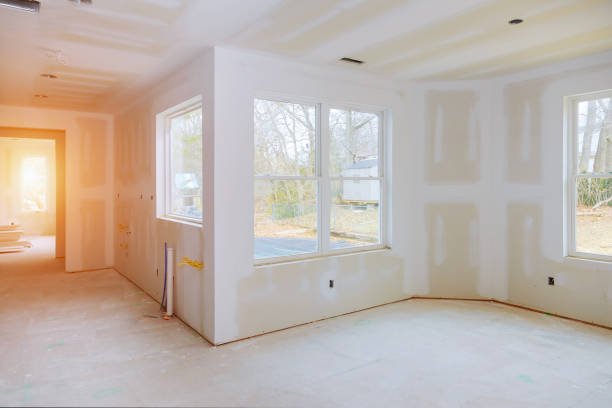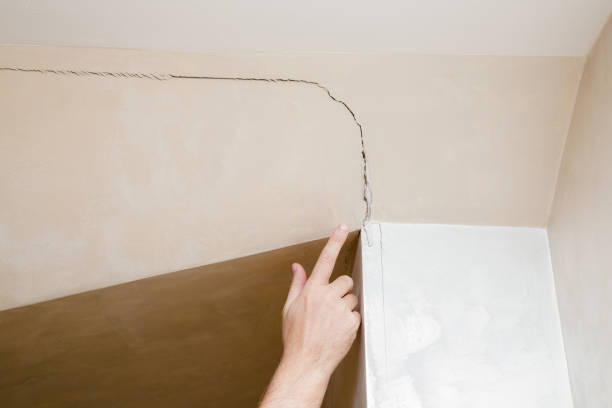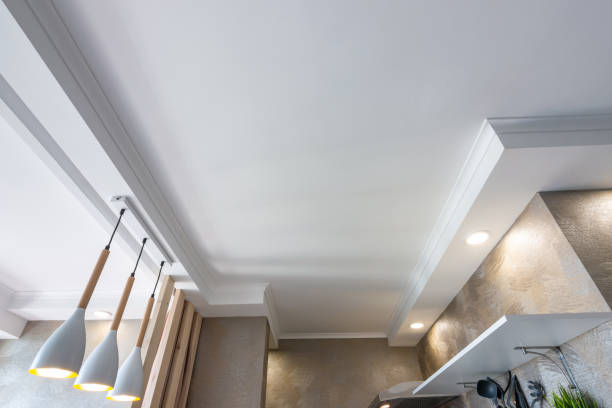Understanding the Common Causes of Plaster Damage and Deterioration in Walls

When it comes to maintaining the structural integrity and visual appeal of your walls, understanding the common causes of plaster damage and deterioration is essential. Plaster walls can be susceptible to various issues over time, but with proper knowledge and proactive measures, you can prevent or address these concerns effectively.
In this article, we will explore the common causes that lead to plaster damage and deterioration in walls, providing you with valuable insights to help you safeguard your living spaces. Whether you're seeking ways to prevent future problems or planning to undertake plaster repairs to walls, this guide will equip you with the necessary information to make informed decisions and preserve the beauty and functionality of your walls. Settling and Structural Issues
Settling and structural problems are among the primary culprits behind plaster damage. When a building settles or experiences foundation movement, stress is exerted on the walls, leading to cracks and shifts in the plaster.
These issues can arise due to poor soil conditions, inadequate construction techniques, or even natural factors like earthquakes. Recognizing and addressing settling and structural issues promptly is crucial to preventing further plaster damage.
Moisture and Water Damage
Moisture is a significant enemy of plaster walls, and water damage can wreak havoc on their integrity. Leaks, condensation, and flooding can introduce excess moisture into the plaster, causing it to soften, bubble, or crumble.
Over time, this can result in cracks, peeling, and the formation of mould or mildew. Proper waterproofing measures, regular inspections, and timely repairs are essential to protect plaster walls from moisture-related damage.
Temperature Fluctuations
Plaster walls expand and contract with changes in temperature, and extreme heat or cold can accelerate their deterioration. The repeated expansion and contraction can lead to cracks, flaking, or detachment from the underlying surface.
Additionally, exposure to intense heat sources, such as fireplaces or radiators, can cause localised damage. Maintaining a stable temperature and using insulation measures can help minimise the impact of temperature fluctuations on plaster walls.
Poor Installation or Workmanship
Inadequate installation or subpar workmanship during plaster application can contribute to long-term damage. Insufficient curing time, improper mixing ratios, or incorrect application techniques can compromise the plaster's adhesion and strength.
This can result in cracking, crumbling, or poor bonding with the underlying wall substrate. Engaging experienced professionals for plaster repairs to walls and ensuring proper installation practices are essential for preserving the longevity of plaster walls.
Wear and Tear

Daily wear and tear can take a toll on plaster walls, especially in high-traffic areas. Accidental impacts, furniture scratches, or regular cleaning practices can cause surface damage over time. While minor scratches and scuffs may be inevitable, taking precautions such as using protective coverings, gentle cleaning methods, and periodic touch-ups can help minimise wear and tear on plaster walls.
Chemical Reactions
Chemical interactions can also contribute to plaster damage, especially in environments with corrosive substances. Certain cleaning agents, chemicals, or even atmospheric pollutants can react with the plaster, leading to discoloration, erosion, or surface degradation. It's crucial to avoid using harsh chemicals on plaster walls and to promptly address any chemical spills or exposures.
Environmental Factors
Environmental conditions can significantly impact the condition of plaster walls. High humidity levels can cause moisture absorption, leading to softening or mould growth. Poor indoor air quality or pollutants can also have a detrimental effect on plaster surfaces. Maintaining a well-ventilated space, controlling humidity levels, and minimising exposure to pollutants can help preserve the integrity of plaster walls.
Age and Degradation

With time, plaster naturally ages and undergoes degradation. As plaster walls age, they may develop hairline cracks, surface irregularities, or a worn appearance. Factors such as the quality of the original plaster, exposure to environmental elements, and overall maintenance can influence the rate of degradation.
Regular inspections and proactive measures like patching, reapplication of protective coatings, and periodic maintenance can help slow down the ageing process and extend the lifespan of plaster walls.
Plaster walls can suffer from various forms of damage and deterioration over time. Understanding the common causes behind plaster damage is crucial for homeowners seeking to preserve the integrity and aesthetics of their walls. Settling and structural issues, moisture and water damage, temperature fluctuations, poor installation or workmanship, wear and tear, chemical reactions, environmental factors, and natural ageing are among the key factors contributing to plaster damage.
By being aware of these causes, homeowners can take preventive measures, perform timely repairs, and engage professionals for plaster repairs to walls when needed. With proper care and maintenance, plaster walls can retain their beauty and durability for years to come.
Post Your Ad Here
Comments